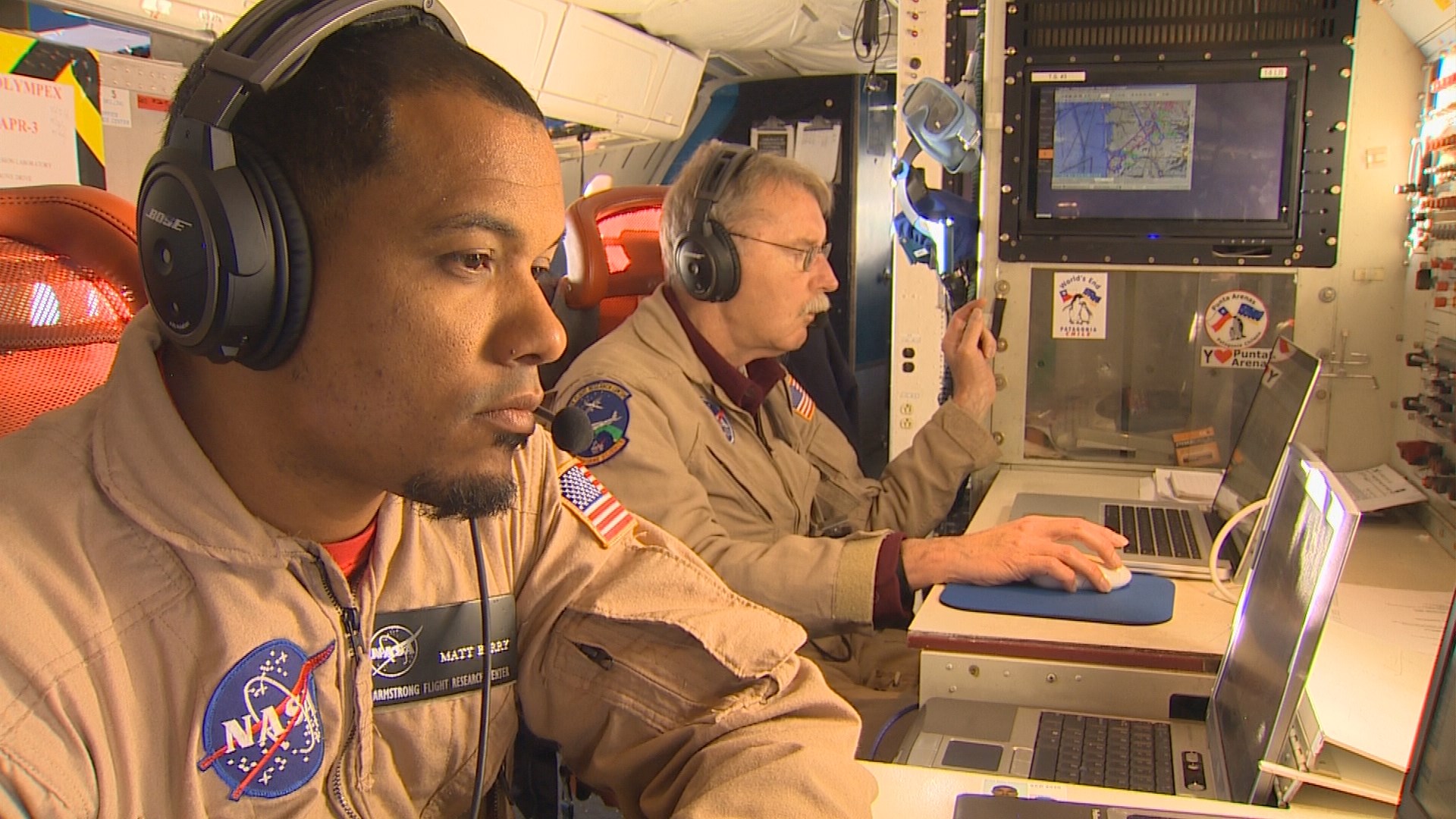NASA doesn't just operate spacecraft. It also operates airplanes, including a one-time airliner known as a DC-8.
This now highly modified four-engine jet is helping verify if a new generation of weather satellites is as accurate as designed. Called the GPM, or Global Precipitation Measurement satellite, this new cutting edge technology is designed to precisely calculate how much water is in a storm, be it from rain, snow or ice.
At one point, the DC-8 and a scientifically equipped Cessna Citation flying below, have to be lined up at precisely the correct time as the satellite flies overhead.
"So it's a fair amount of work and coordination. Fortunately we're trained to do that," said Wayne Ringelberg, a pilot out of NASA's Armstrong Flight Research Center at Edwards, California.
The plane is packed with new radar technology that studies slices from a large wet storm slamming into the Olympic Peninsula, moisture that is turned to snow and ice as the mountains drive the storm higher into the atmosphere.
This joint project between NASA and the University of Washington's Department of Atmospheric Sciences is providing the final and most challenging testing for the GPM satellite.
Called Project Olympex, the combination of heavy winter storms hitting steep mountain terrain is considered a highly complex environment. GPM must be able to estimate the size of droplets and snowflakes, and determine how much total moisture is in the storm - and do it anywhere on the planet.
The testing involves three aircraft, including a high altitude ER-2, a civilian version of the U-2 spy plane, which joins the fleet this week.
On the ground, everything from rain gauges to sophisticated radar known as Doppler on Wheels looks skyward from multiple locations on the Washington coast, in the mountains themselves and in other lowland locations.


